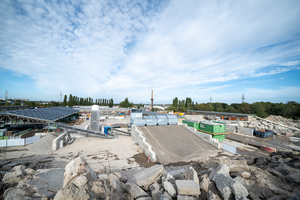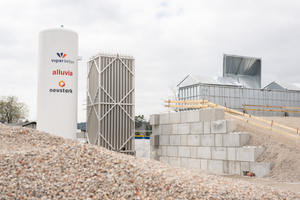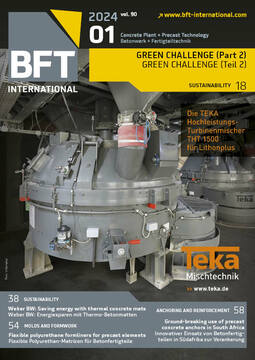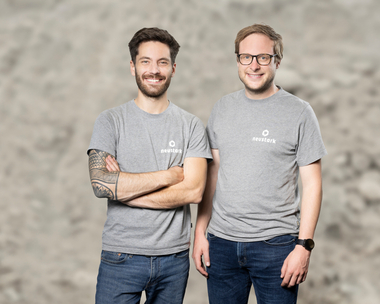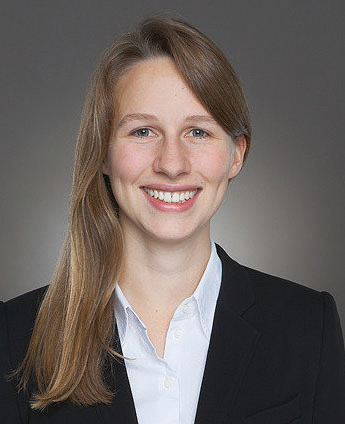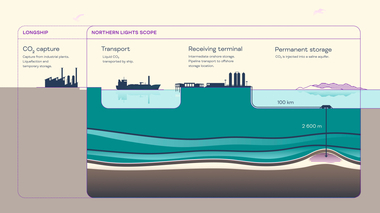Track record: more than 750 tons of CO2 removed from the atmosphere so far
In the last BFT edition of 2023, as you know, we started with our new „GREEN CHALLENGE“ section, among others, presenting an interview with Dr. Johannes Tiefenthaler, the CEO of the Swiss scale-up Neustark. The actual presentation of the company foundet in 2019 and being based in Bern, follows in this article now.
In the last BFT edition of 2023, as you know, we started with our new „GREEN CHALLENGE“ section, among others, presenting an interview with Dr. Johannes Tiefenthaler, the CEO of the Swiss scale-up Neustark. The actual presentation of the company founded in 2019, working with a team of 55 people, and being based in Bern, follows in this article now.
According to the IPCC, for limiting global warming to 1.5 °C, it is necessary that net-zero emissions will be realized by 2050. This goal can only be achieved if carbon dioxide is removed from the air in addition to reducing emissions substantially. For this purpose, solutions for the removal of carbon dioxide must be quickly enabled on a scale of billions of tons.
Neustark is a leading provider in the fast-growing sector of carbon dioxide removal (CDR) and has developed a technology for the permanent storage of biogenic CO2 in recycled mineral waste such as demolition concrete. During the recycling process, the carbon dioxide is injected in the granulated material of the demolition concrete. A mineralization process is triggered, transforming the carbon dioxide into limestone and binding it to the pores and the surface. The granulated concrete loaded with CO2 is then reused at the construction sites in the respective region.
The first facilities are operating in Switzerland and in Europe and are already storing tons of carbon dioxide every day. This process removes carbon dioxide, in fact, permanently. At present, Neustark is working on increasing its business activities and impact across the world – on the road to their ambition of permanently removing one million tons of carbon dioxide in 2030 and beyond.
From a start-up to the leading carbon removal provider
After commissioning the first stationary plant in 2022, Neustark has now tvelve CO2 storage sites with a cumulative storage capacity of about 5,000 tons per year. At the end of September, the first storage facility was officially put into operation in the German capital of Berlin. Additional 15 capture and storage facilities are currently under construction in Germany, Switzerland, Austria and France. With an average construction period of approx. only six months per facility, the CO2 storage technology is gaining ground rapidly.
Neustark is supported by top-level investors, including Siemens Financial Services, ACE & Company, Verve Ventures, and now also Holcim. As part of the business model, the companies buy Neustark‘s CDR that helps them to achieve a net-zero balance along with their reduction efforts. Recently, Neustark secured one of the biggest CDR purchases this year: The Swiss Climate Cent Foundation (Stiftung Klimarappen) bought 29,500 tons of Neustark’s carbon removal. Further CDR clients include UBS, Microsoft and Verdane, among others.
Holcim introduces Neustark technology at their recycling plants throughout the world
The building materials giant Holcim invests in the Swiss climate-tech company in order to accelerate scaling of the exceptional technology for carbon dioxide removal by Neustark. Neustark and Holcim will make a significant contribution to the removal of carbon dioxide, still in this decade, because a substantial part of the 1 million tons of CO2, that Neustark is aiming at, will be stored at locations of Holcim. Neustark and Holcim extent their partnership with a ground-breaking investment and strategic collaboration agreement. Holcim made a substantial investment in the Swiss climate-tech pioneer to accelerate the scaling of the exceptional technology for carbon dioxide removal by Neustark. In parallel and as part of the strategic collaboration, Holcim commits to introduce the CO2 storage technology of Neustark at their recycling plants of building materials throughout the world.
„We are proud to have Holcim on board as a financial and strategic partner. Thanks to their global presence and the large operating range of their production facilities, we are able to roll out our technology for carbon dioxide removal rapidly in this decade,“ states the co-founder and co-CEO at Neustark, Valentin Gutknecht. „This agreement between Neustark and Holcim – one of the leading suppliers of innovative and sustainable construction solutions – marks a significant step forward both in carbon dioxide removal and the decarbonization of the construction industry.“ Dr. Johannes Tiefenthaler adds: „Our strategic partnership with Holcim represents an essential part of our megaton roadmap. It will act as catalyst for strongly scaling of our carbon dioxide removal which we will achieve in the next few years.“
On the one hand, the investment highlights the commitment of Holcim to use clean technologies for a net-zero future, ranging from carbon capture, utilization and storage (CCUS) to carbon dioxide removal (CDR). On the other hand, the collaboration strengthens the leading role of Neustark in permanent carbon dioxide removal.
The two companies have been working together for several years now to develop new solutions for climate protection. Since May 2023, Holcim has been operating a mobile storage plant, conceived by Neustark, which is already storing tons of CO2 at several Holcim recycling plants now. It will be followed by hundreds of similar storage facilities at Holcim locations all over the world in the next few years.
Apart from reductions, the carbon removal is imperative
For their business model of storing captured biogenic CO2 in demolition concrete, Neustark banks on partnerships with numerous local and global recycling companies of building materials. With the collaboration of a large number of recycling partners, Neustark is striving to put thousands of storage facilities in operation in the next few years. In addition to demolition concrete, CO2 is also stored in slurries. Further waste streams are to be developed in joint projects.
Net-zero emissions have to be reached by 2050 in order to cope with the climate change. Therefore, a huge reduction of existing and historic emissions is required. However, to achieve the global climate goals, the removal of carbon dioxide is also imperative, as IPCC observes. Scientists expect that about 10 gigatons of CO2 need to be removed per year in order to reach net-zero emissions by 2050. Building up a reliable and effective market for the carbon dioxide removal at a high rate and on a large scale requires extensive investments and a rapid introduction of well-tried negative-emission technologies.
The capture of biogenic CO2 at its source, e.g., in biogas plants, and its permanent storage in demolition materials, e.g., in demolished concrete, by means of an accelerated mineralization process. Mineralization is one of the few technologies that guarantee a real permanent carbon dioxide removal. The carbon dioxide is stored for millions of years, and the risk of a reversion can be neglected verifiably. Since the CO2 is of biogenic origin, storage removes it permanently. Important negative emissions are generated in this way.
Many other plants are under construction in the DACH region (Germany, Austria and Switzerland) at present.

